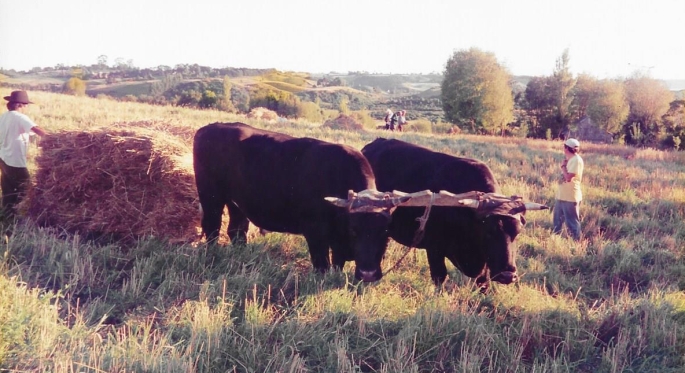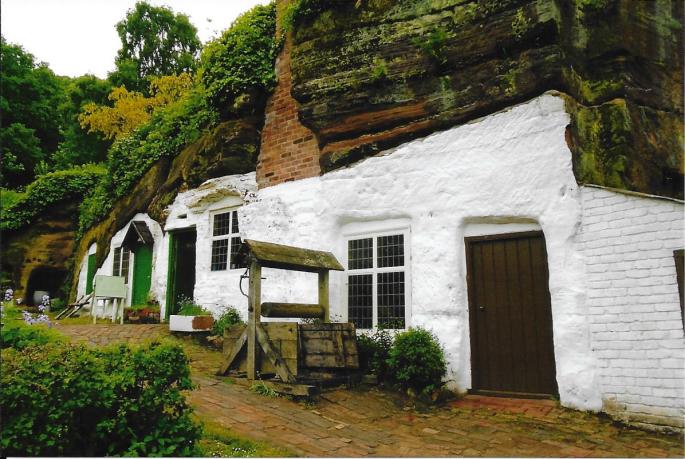A label is supposed to pick out the main feature of something – something by which it can be identified. It is often also a judgment. When the subject matter is human species this is a sensitive issue, unless, of course those prehistoric species are considered sub-human and so devoid of any opinion about it – also dead a long time ago so unable to reply.
The oldest examples of mankind are labelled Australopithecus meaning ‘southern apes.’ Subsequent fossils are labelled as ‘hominids.’ This means they are considered to be animals walking upright and looking like humans, but too stupid to be humans.
Thought experiment: What would it be like to meet one of these so-called sub-human hominids?
If I met a Homo heidelbergensis woman from 500 000 years ago here in England she would actually look very like me. (My natural hair colour is dark by the way). This woman would speak a language I couldn’t understand. Would I turn round and say “I’m a Homo sapiens and you’re not?” It is only possible to say this when all you meet is some dry fossilized bones in a museum, and the bones can’t answer back.
Every human bone in my body tells me that this is wrong.
I am convinced of the humanity of prehistoric species of mankind. I think that labels should represent the humanness and peopleness of our ancestors.
Here is a new classification of species in the human line with the current labels in brackets. Note that the separation into species is based on skeletal differences and does not imply that the different species could not have children together.
- Homo primocreatus / Primordial Man
[Australopithecus; Paranthropus; Zinjanthropus; Nut-cracker man]
Example: ‘Lucy’
3.6 million years, Africa
2. Homo habilis / Tool-User Man
Oldowan stone tools, 2 million years, Africa
3. Homo ignis / Fire-maker Man
[Homo erectus meaning upright man] 2 million years, Indonesia
[Homo ergaster meaning fast-runner man] 1.8 million years, Africa
Example: ‘Turkana Boy’ from Kenya
Homo ignis antecessor
[Homo antecesor] 1.2 million years, Atapuerca Spain
Europe 900 000 years
4. Homo praecursor / Precursor Man
Homo praecursor pekinensis
[Sinanthropus pekinensis; Homo erectus; Peking Man; Java Man]
750 000 years China, Indonesia
Homo praecursor afarensis
900 000 years Olorgesailie
[Rhodesia man; Homo ergaster]
324 000 years Kabwe, Rhodesia/ Zambia
[Homo heidelbergensis]
Homo praecursor heidelbergensis
[Homo heidelbergensis; Archaic Homo sapiens]
400 000 years, Europe
5. Homo centralis / Central Man
[Neanderthal man]
150 000 years Black Sea, Central Asia
60 000 years Israel, Europe
6. Homo aequalis / Contemporary Man
[Homo sapiens; ‘Anatomically modern man’]
100 000 years, Israel
Homo aequalis fossilis
[Homo sapiens fossilis; Cro Magnon man] France 35 000 years
7. Homo aequalis sinensis
[Mongoloid race]
Homo aequalis europaeus
[Caucasoid white race]
Homo aequalis afarensis
[Negroid race]
Homo aequalis centralis
[Caucasoid semitic race]
Neolithic farming within the last 10 000 years
Civilizations, ancient empires, globalized world
From 2000 BC onwards, progressively of mixed race
Homo is the genus name; aequalis is the Latin species name and europaeus is the name of the race. (If you were classifying animals, plants or domestic animals and dogs the last name would denote the subspecies, variety or breed of dog).
Why change the label Homo sapiens?
Because it is unfair to reserve this label only for ourselves, when all forms of mankind have been ‘sapiens’ which means understanding, rational and wise.










